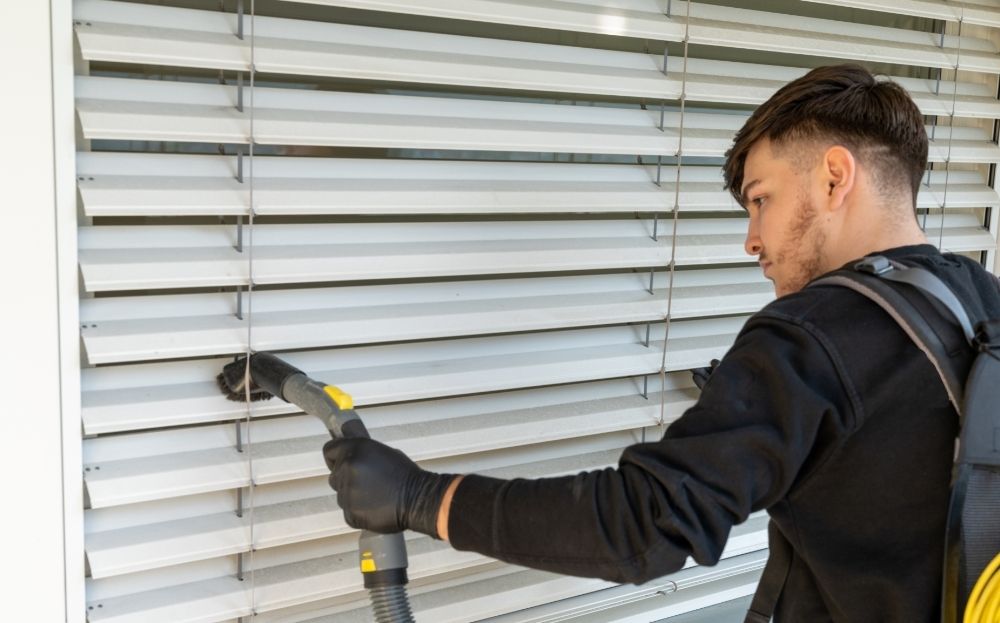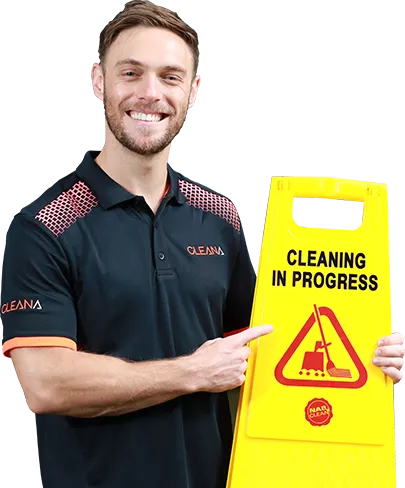commercial cleaning is a must for Venetian blinds because it is a beautiful way to dress your windows, but all that extra surface area can be a real catchall for dust and grime, especially when placed in high-use areas such as the bathroom or the kitchen.
Depending on the material, they can catch a number of nasty particles and when forgotten about can make even the cleanest looking house or office look dirty and drab.
Venetian blinds can either have horizontal slats or vertical slats and are the most common form of window dressing in offices as they are easier to clean and relatively cost-effective, letting you change the amount of light you let in throughout the working day with ease.
Different materials of Venetian blinds can require slightly different techniques for cleaning, but the general process is the same.
The aim is to get rid of all that lingering dust and debris that builds up in your blinds, leaving you with a fresh and clean home or office space!
Top Tips For Cleaning Venetian Blinds
Before we get into a more in-depth how-to, here are a few of our tried and tested top tips to get you started.
- Don’t wait until your blinds are filthy. It may be a little late to say this now if you’re clicking on this article, but you’ll save yourself a lot of hassle in the future if you make sure to give your Venetian blinds a weekly dusting in between the slats with a microfibre cloth, or even a large fluffy duster.
- Air your house out often. Venetian blinds are notorious for gathering dust, unfortunately, there’s not too much you can do to prevent this, as the materials used are usually pretty prime for attracting dirt particles. One thing you can do however is to keep your house or office ventilated to stop any excess dust from gathering. This will also prevent your blinds from picking up too many odors from inside your home.
- Keep your blinds fresh with a scented essential oil spray. This works for wooden and material blinds but not metal or plastic. Having a breeze run through your blinds when they have a scent lightly sprayed on them will keep your home or office smelling fresh and vibrant. Be aware however that some sprays can stain, so start by testing them out on a tiny area of your blind before doing the whole thing!
- Look to your manufacturer for advice. Venetian blinds are made out of a whole host of materials, and you don’t want to risk ruining your expensive blinds by using the wrong sort of spray or product. Most manufacturers will have a guide or FAQ on how to clean their specific blinds if you are struggling.
- Fix sun damage. If your fabric blinds are looking dingy and yellowing, they have probably suffered sun damage. You may think this is unfixable, but don’t resign yourself to ugly blinds or forking out for a whole new set! Put your blinds (gently!) into a tub filled with cold water until fully submerged. Add 3 cups of uncolored liquid bleach and leave to sit for 10 minutes, gently agitating after 5. Drain and rinse thoroughly and dry. You should now have sparkling fresh-looking blinds!
How-To Guide For Cleaning Venetian Blinds?

- Gather up your supplies before you begin.
- What you’ll need:
- A vacuum cleaner with a soft-bristled brush attachment
- Clean microfibre cloth, clean old t-shirt, or even a clean sock
- A drop of dish soap
- A bucket of warm water
- Baking soda for stubborn stains
- Large, clean fluffy dusting brush
- What you’ll need:
- Fully close your blinds. Depending on the style of blind you have, you should be able to close them and not have them overlap. If they do overlap when closed, leave them open, but pointing downwards.
- Dust your blinds thoroughly. If you have vertical blinds, hold the bottom of your blind to stabilize it, whilst running a large dusting brush from top to bottom of each blind. Wipe these in a downward motion to prevent dust from settling on your clean work, and to prevent your blinds from coming off their wall hooks.
- You can also do this with a vacuum with a clean brush attachment if you have one. For horizontal blinds, do the same but work from side to side, starting with the top blind.
- Flip your blinds, or go behind them if possible, and repeat the process, getting as much fallen dust and debris as possible without damaging your blinds.
- Use a damp microfibre cloth. If you have blinds in your kitchen or bathroom especially, or if your blinds haven’t had a good clean in a while, they will probably have gathered grease or other dirt marks on them.
- Dipping into warm water with a touch of dish soap, run a microfibre cloth along each of your blinds, following the same guides as when dusting.
- Be careful not to soak your blinds. Only use a touch of water when cleaning your blinds, especially wooden ones, as this can damage them and cause warping which you will struggle to correct.
- Deep clean your blinds if necessary. If you have stubborn staining that won’t come out with a damp microfibre cloth, you may need to deep clean your blinds. Start by taking off your blinds and laying them in a bathtub filled with warm water, a cup of baking soda, and a few drops of dish soap. Soak these for an hour or longer to help the baking soda penetrate the stain. Rinse thoroughly with warm water.
- Hang up your blinds to dry if necessary. This will prevent your blinds from getting damaged by mold and mildew. You can always give them a light spritzing with a fragrance, though be sure to test on a small area and let them fully dry.
- Leave your windows open to air out your space and freshen up your blinds now that they are nice and clean.
Final Thoughts
It’s a bit of a pain to clean your Venetian blinds thoroughly but will make a world of difference once it’s done.
After your deep clean, be sure to give your blinds a light dusting regularly to ensure you don’t have to go through that arduous process again any time soon! Now sit back, relax and enjoy your nice freshly cleaned blinds.


